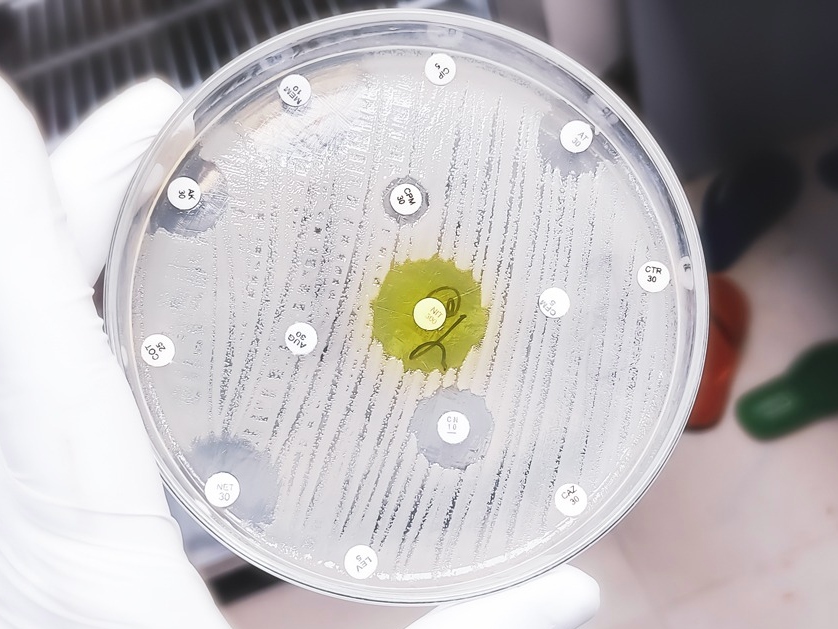Antimicrobial medicines are one of the cornerstones of modern healthcare, yet without decisive action superbugs are on track to claim 10 million lives per year by 2050.
These superbugs, or multi-drug resistant organisms, are the result of antimicrobial resistance (AMR) and they are rapidly evolving to outsmart even the most potent antimicrobials.
AMR is already among the World Health Organization’s top ten global public health threats — responsible for an estimated 1.27 million deaths and implicated in 4.71 million deaths each year.
But not only are the consequences of AMR health related: as AMR threatens food security, animal health, and economic stability. The World Bank estimates that, without intervention, AMR could slash global GDP by up to 5% by 2050, pushing millions into extreme poverty, and driving annual healthcare costs past US$1 trillion.
Targeted Action and Financing the Fight Against Antimicrobial Resistance in Asia
A new Insight Report from the World Economic Forum’s Giving to Amplify Earth Action (GAEA) initiative, Centre for Impact Investing and Practices (CIIP) and Philanthropy Asia Alliance (PAA) aims to inform and encourage private funders, impact investors and philanthropists to support the fight against AMR.
The paper, Targeted Action and Financing the Fight Against Antimicrobial Resistance in Asia, notes “The primary obstacles to tackling AMR are economic rather than scientific, as the production and distribution of antibiotics are plagued by market and government failures.”
Yet if the financial resources required to reduce deaths associated with AMR can be mobilised, more than 100 million lives can be saved globally by 2050.
“Philanthropy, investors and innovative financing can all play critical roles in supercharging these efforts. Within the next decade, investments in innovative AMR solutions in the Asia-Pacific are projected to generate potential healthcare savings of $10-15 billion per year, along with an additional $35-40 billion of annual savings in socio-economic costs.
“Ultimately, addressing AMR requires a whole-ecosystem approach, with concerted efforts and collaboration across sectors and borders to create a healthier future for Asia and the world.”
The report also highlights the worrying synergy between climate change and AMR, with climate change potentially exacerbating the spread and impact of AMR.
Access the full report here: Targeted Action and Financing the Fight Against Antimicrobial Resistance in Asia
Antimicrobial Resistance Research and Innovation in Australia
Additionally, a new report — a collaboration between The Lens together with CSIRO — shares data-driven insights into Australia’s AMR research and patent landscape to help address and understand key challenges in the AMR space.
The report, Antimicrobial Resistance Research and Innovation in Australia, provides an accessible, up-to-date overview of the research and innovation environment for antimicrobial resistance technologies and solutions in Australia. Benefits include the identification and monitoring of global collaboration opportunities and research and patent trends, and information to support evidence-informed policy development.
Professor Branwen Morgan, Lead of Minimising Antimicrobial Resistance at CSIRO, said the project will help connect the dots across Australia’s AMR ecosystem.
“By providing an up-to-date picture of the researchers and innovators working in the space we can drive interdisciplinary approaches and translate research into real-world solutions,” Professor Morgan said.
CSIRO Global AMR Summit
Last September Australia’s national science agency, CSIRO, launched AMR Action and Insights to raise awareness and advocate for AMR among policy-makers and the public — one of UCARE’s priorities as mentioned in the WEF report.
Professor Morgan commented on the importance of the project, saying “Information is often siloed within different sectors, leading many people to believe that AMR doesn’t affect them or that they can’t do anything about it.
“They might think it’s not relevant because they don’t take antimicrobials, or they mistakenly believe there are new drugs in the pipeline that will solve the problem.
“This project seeks to break down these silos by showcasing perspectives from all sectors. We have taken a One Health approach, which recognises the interconnection between people, animals, and the environment.”
Now, together with the UK-based Fleming Initiative CSIRO are planning a global AMR Summit in Sydney in February 2026.
Key themes will include investing through an AMR lens as well as funds and financing. If this is of interest to you and you’d like to be kept in the loop, please email amrmission@csiro.au.
Join the OnImpact mailing list to receive the latest impact investment news and updates.

